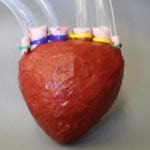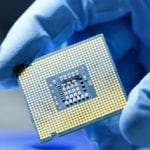 Humans
Humans  Humans
Humans  Animals
Animals 10 Animals That Humiliated and Harmed Historical Leaders
 History
History 10 Most Influential Protests in Modern History
 Creepy
Creepy 10 More Representations of Death from Myth, Legend, and Folktale
 Technology
Technology 10 Scientific Breakthroughs of 2025 That’ll Change Everything
 Our World
Our World 10 Ways Icelandic Culture Makes Other Countries Look Boring
 Misconceptions
Misconceptions 10 Common Misconceptions About the Victorian Era
 Mysteries
Mysteries 10 Strange Unexplained Mysteries of 2025
 Miscellaneous
Miscellaneous 10 of History’s Most Bell-Ringing Finishing Moves
 History
History 10 Great Escapes That Ended Right Back in Captivity
 Humans
Humans 10 Everyday Human Behaviors That Are Actually Survival Instincts
 Animals
Animals 10 Animals That Humiliated and Harmed Historical Leaders
 History
History 10 Most Influential Protests in Modern History
Who's Behind Listverse?

Jamie Frater
Head Editor
Jamie founded Listverse due to an insatiable desire to share fascinating, obscure, and bizarre facts. He has been a guest speaker on numerous national radio and television stations and is a five time published author.
More About Us Creepy
Creepy 10 More Representations of Death from Myth, Legend, and Folktale
 Technology
Technology 10 Scientific Breakthroughs of 2025 That’ll Change Everything
 Our World
Our World 10 Ways Icelandic Culture Makes Other Countries Look Boring
 Misconceptions
Misconceptions 10 Common Misconceptions About the Victorian Era
 Mysteries
Mysteries 10 Strange Unexplained Mysteries of 2025
 Miscellaneous
Miscellaneous 10 of History’s Most Bell-Ringing Finishing Moves
 History
History 10 Great Escapes That Ended Right Back in Captivity
10 Unconventional Uses Of Nanotechnology
It’s hard to envision the future without the presence of nanotechnologies. Manipulating matter at an atomic and sub-molecular level has paved the way for major breakthroughs in chemistry, biology, and medicine. Yet, the unfolding applications of nanotechnology are far broader and more diverse than what we’ve imagined.
10Film Making
Without the invention of the scanning tunneling microscope (STM) in the 1980s, the field of nanotechnology might have remained science fiction. With its atomic precision the STM has enabled physicists to study the structure of matter in a way that was impossible with conventional microscopes.
The astonishing potential of STM was demonstrated by researchers at IBM when they created A Boy and His Atom, which was the world’s smallest animated film. It was produced by moving individual atoms on a copper surface.
The 90-second movie depicts a boy made of carbon monoxide molecules playing with a ball, dancing, and bouncing on a trampoline. Consisting of 202 frames, the animation takes action in a space as tiny as 1/1000 the size of a single human hair. To make the movie, researchers utilized a unique feature that comes with the STM: an electrically charged and extremely sharp stylus with a tip made of one atom. The stylus is capable of sensing the exact positions of the carbon molecules on the animation surface (which is the sheet of copper in this case). Therefore, it can be used to create images of the molecules as well as move them into new positions.
9Oil Recovery

The global expenditure for oil exploration has risen exponentially during the past decade. However, efficiency in oil recovery has remained a major issue. When petroleum companies shut down an oil well, less than half of the oil in the reservoir is extracted. The rest is left behind because it is trapped in the rock where it is too expensive to recover. Luckily, with help from nanotechnology, scientists in China have discovered a way to work around this.
The solution is enhancing an existing drilling technique. The original technique involves injecting water into the rock pores where oil is located. This displaces the oil and forces it out. However, this method reveals its limitation as soon as the oil in the easily reached pores has been extracted. By then, water begins emerging from the well instead of oil.
To prevent this, Chinese researchers Peng and Ming Yuan Li have come up with the idea of infusing the water with nanoparticles that can plug the passages between the rock pores. This method is intended to make the water take narrower paths into the pores that contain oil and force the oil out. With successful field studies conducted in China, this method has proven highly efficient in recovering the 50 percent of the black gold that otherwise remains out of reach.
8High-Resolution Displays

The images on computer screens are presented via tiny dots called pixels. Regardless of their sizes and shapes, the number of pixels on a screen has remained a determining factor of image quality. With traditional displays, however, more pixels meant larger and bulkier screens—an obvious limitation.
While companies were busy selling their colossal screens to consumers, scientists from Oxford University have discovered a way to create pixels that are just a few hundred nanometers across. This was achieved by exploiting the properties of a phase-change material called GST (a material found in thermal management products). In the experiment, the scientists used seven-nanometer-thick layers of GST sandwiched between transparent electrodes. Each layer—just 300 by 300 nanometers in size—acts as a pixel that can be electrically switched on and off. By passing electrical current through layers, the scientists were able to produce images with fair quality and contrast.
The nano-pixels will serve a variety of purposes where the conventional pixels have become impractical. For instance, their tiny size and thickness will make them a great choice for technologies such as smart glasses, foldable screens, and synthetic retinas. Another advantage of nano-pixel displays is their lower energy consumption. Unlike the existing displays that constantly refresh all pixels to form images, the GST-layer-based displays only refresh the part of the display that actually changes, saving power.
7Color-Changing Paint
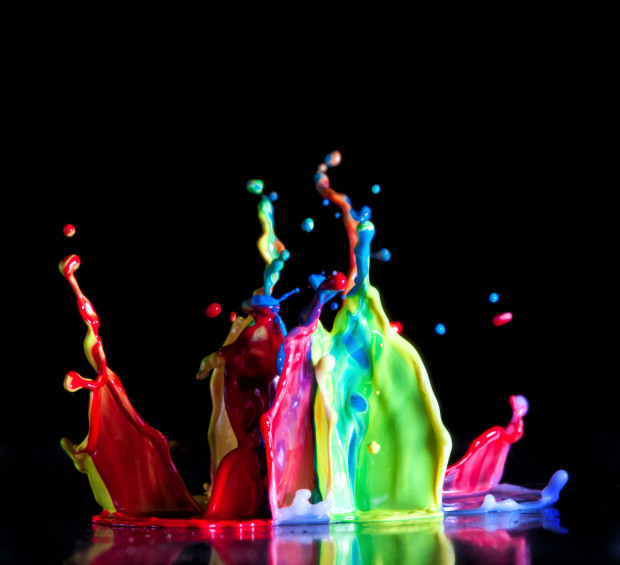
While experimenting on strings of gold nanoparticles, scientists at the University of California have stumbled upon an astonishing observation. They’ve noticed that the color of gold changes when a string of its particles is stretched or retracted, producing what one of the scientists described as a beautiful bright blue that morphs into purple and then red. The finding has inspired the scientists to create sensors out of gold nanoparticles that change colors when pressure is applied to them.
To produce the sensors, gold nanoparticles have to be added to a flexible polymer film. When the film is pressed, it stretches and causes particles to separate and the color to change. Pressing lightly turns the sensor purple while pressing harder turns it red. The scientists noticed this intriguing property not only in gold particles but also in silver where the particles change into yellow when stretched.
The sensors could serve a variety of purposes. For instance, they could be incorporated into furniture, such as couches or beds, to assess sitting or sleeping positions. Despite being made of gold, the sensor is tiny enough to overcome the cost issue.
6Phone Charging

Whether it’s an iPhone, Samsung, or different type of phone, every smartphone that leaves the factory comes with two notorious downsides: battery life and the time it takes to recharge. While the first is still a universal problem, scientists from the city of Ramat Gan in Israel have managed to tackle the second problem by creating a battery that requires only 30 seconds to recharge.
The breakthrough was attributed to a project related to Alzheimer’s disease that was carried out by researchers from the University of Tel Aviv. The researchers discovered that the peptide molecules that shorten the brain’s neurons and cause disease have a very high capacitance (the ability to preserve electric charges). This finding has contributed to the foundation of StoreDot, a company that focuses on nanotechnologies that target consumer products. With help from researchers, StoreDot has developed NanoDots—technology that harnesses the peptides’ properties to improve the battery life of smartphones. The company demonstrated a prototype of its battery in Microsoft’s ThinkNext event. Using a Samsung Galaxy S3 phone, the battery was charged from zero to full in less than a minute.
5Sophisticated Drug Delivery

Treatments for diseases such as cancer can be prohibitively expensive and, in some cases, too late. Fortunately, several medical firms from around the world are researching cheap and effective ways of treating illnesses. Among them is Immusoft, a company that aims to revolutionize how medicines are delivered to our bodies.
Instead of spending billions of dollars on drugs and therapy programs, Immusoft believes that we can engineer our bodies to produce drugs by themselves. With help from the immune system, cells of a patient can be altered to receive new genetic information that allows them to make their own medicine. The genetic information can be delivered via nano-sized capsules injected into the body.
The new method hasn’t been tested out on a human patient yet. Nevertheless, Immusoft and other institutions have reported successful experiments conducted on mice. If proven effective on humans, the method will significantly reduce the treatment and therapy costs of cardiovascular diseases and various other illnesses.
4Molecular Communication
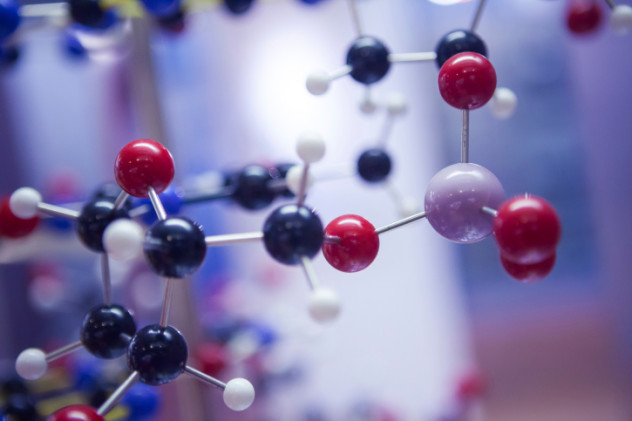
There are circumstances in which electromagnetic waves, the soul of global telecommunication, become unusable. Think of an electromagnetic pulse that could render communication satellites, and every form of technology relying on them, useless. We are quite familiar with such terrifying scenarios from doomsday movies. Furthermore, this issue has been contemplated for years by researchers from the University of Warwick in the United Kingdom and the York University in Canada before ultimately coming up with an unexpected solution.
The researchers observed how some animal species, particularly insects, employ pheromones to communicate across long distances. After collecting the data, they were able to develop a communication method in which messages are encoded in the molecules of evaporated alcohol. The researchers successfully demonstrated the new technique using rubbing alcohol as a signaling chemical and “O Canada” as their first message.
Two devices were employed with this method including a transmitter to encode and send the message and a receiver to decode and display it. The method works by keying in a text message on the transmitter using Arduino Uno (an open-source microcontroller) that comes with an LCD screen and buttons. The controller then converts the text input into a binary sequence which is read by an electronic sprayer containing the alcohol. Once the binary message is read, the sprayer converts it into a controlled set of sprays where “1” represents a spray and “0” equals no spray. The alcohol in the air is then detected by the receiver which consists of a chemical sensor and a microcontroller. The receiver reads and converts the binary data back to text before displaying it on a screen.
The researchers were able to send and receive the “O Canada” message across several feet of open space. As a result, a number of scientists have expressed confidence in the method. They believe it might be helpful in environments such as underground tunnels or pipelines where electromagnetic waves become useless.
3Computer Storage

During the past few decades, computers have grown exponentially in both processing power and storage capacity. This phenomenon was accurately predicted by James Moore around 50 years ago and later became widely known as Moore’s Law. However, many scientists—including the physicist Michio Kaku—believe that Moore’s Law is falling apart. This is due to the fact that computer power cannot keep up with the exponential rise of the existing manufacturing technologies.
Though Kaku was emphasizing processing power, the same concept applies to storage capacity. Luckily, it’s not the end of the road. A team of researchers from RMIT University in Melbourne are now exploring the alternatives. Led by Dr. Sharath Sriram, the team is on the verge of developing storage devices that mimic the way the human brain stores information. The researchers took the first step and built a nano film that is chemically designed to preserve electric charges in on and off states. The film, which is 10,000 times thinner than a human hair, might become the cornerstone for developing memory devices that replicate the neural networks of the brain.
2Nano Art

The promising development of nanotechnology has earned a great deal of admiration from the scientific community. Nevertheless, breakthroughs in nanotechnology are no longer confined to medicine, biology, and engineering. Nano art is an emerging field that allows us to view the tiny world under the microscope from an entirely new perspective.
As its name implies, nano art is a combination of art and nanoscience practiced by a small number of scientists and artists. Among them is John Hart, a mechanical engineer from the University of Michigan, who made a nano portrait of President Barack Obama. The portrait, which was named Nanobama, was created to honor the President when he was a candidate during the 2008 presidential elections. Each face in Nanobama measures just half a millimeter across and is entirely sculpted from 150 nanotubes. To produce the portraits, Hart first created a line drawing of the iconic “Hope” poster. He then printed the drawing on a glass plate coated with the nanoparticles needed to grow nanotubes. Using a high-temperature furnace, it was only a matter of time before the portrait was ready for a photo shoot.
1Record Breaking
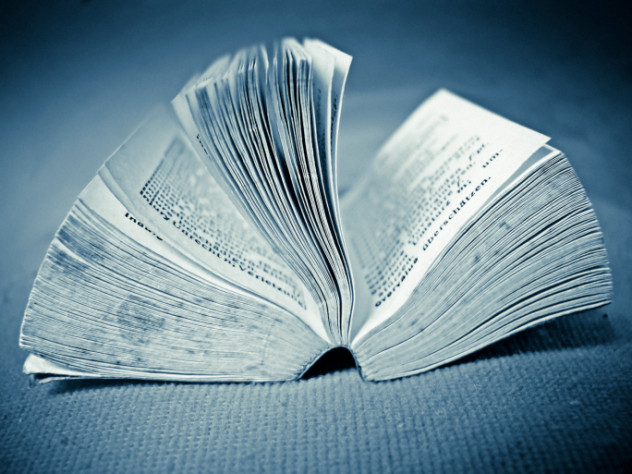
Humanity has always sought to build the strongest, fastest, and largest things. But, when it comes to building the smallest, nanotechnology emerges on the stage. Among the tiniest things ever created using nanotechnology is a book called Teeny Ted From Turnip which is currently regarded as the world’s smallest printed book. Produced in the Nano Imaging Laboratory at Simon Fraser University in Vancouver, Canada, the book measures just 70 micrometers by 100 micrometers and is made of letters carved on 30 crystalline silicon pages.
The book’s story, written by Malcolm Douglas Chaplin, features Teeny Ted and his triumph at the turnip contest at the annual county fair. Over 100 copies of the book have been published. But to buy one of them you will need a deep pocket—a single book costs over $15,000. An electron microscope will also be required to read it, adding even more to the cost.
Find me on Facebook here.





